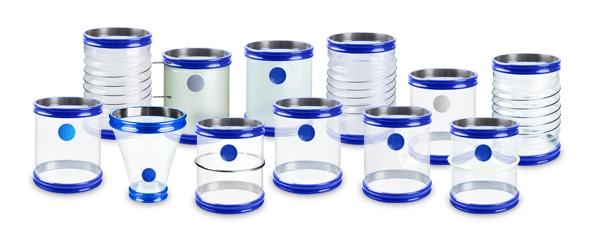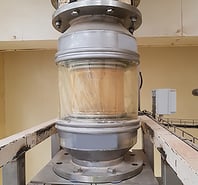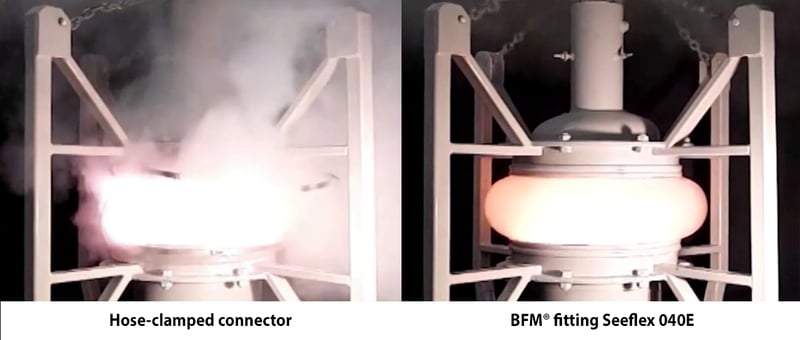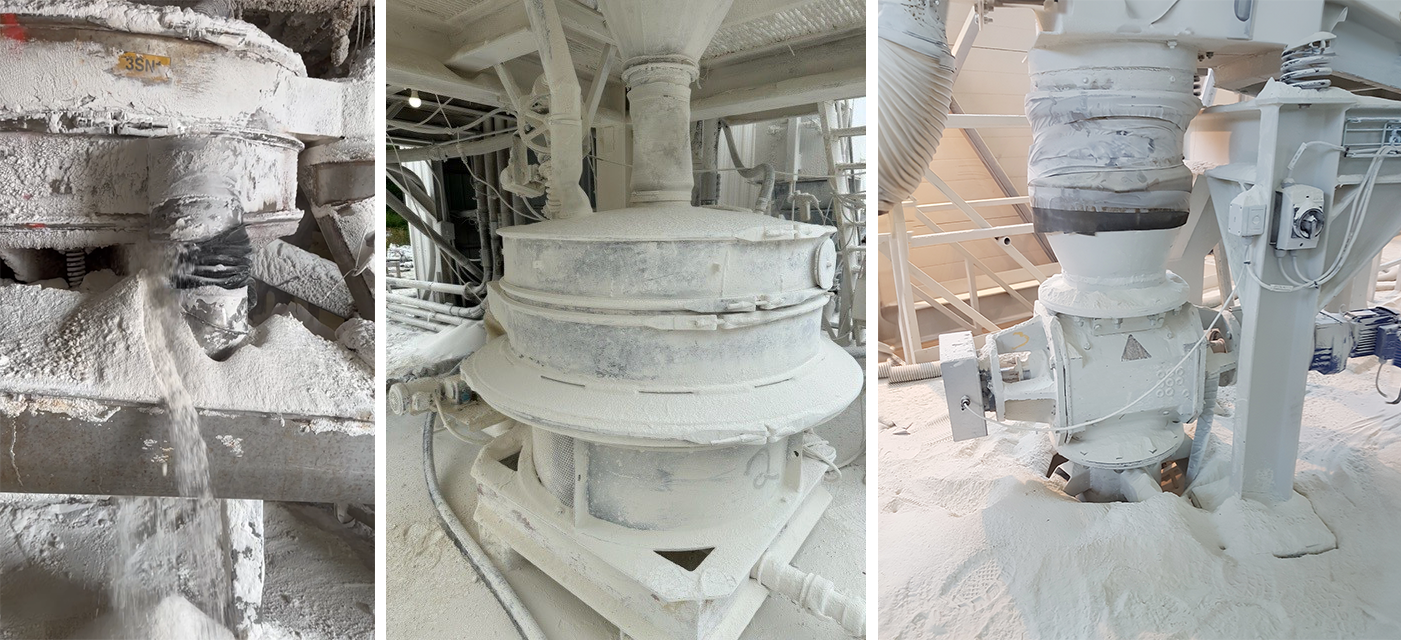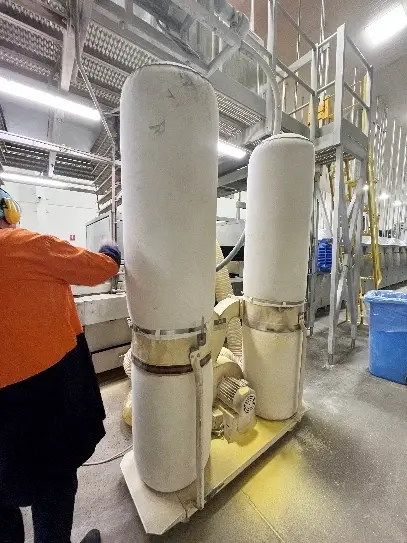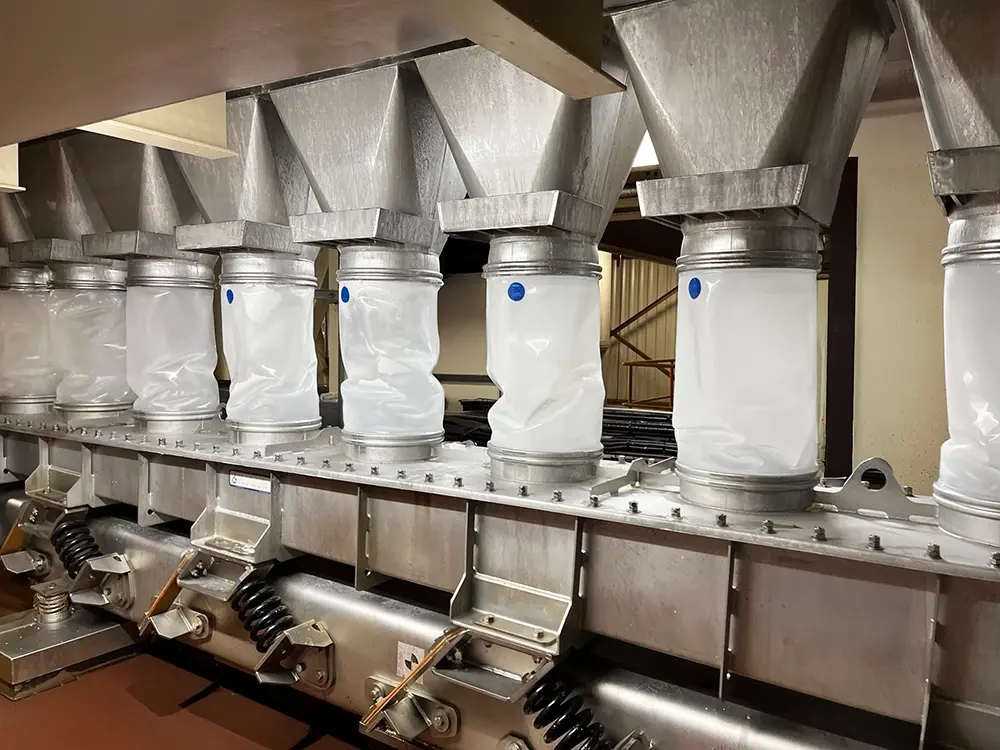In bulk processing, one of the most significant safety hazards that demands attention is the risk posed by combustible dust explosions. These occur when dust sitting on surfaces in the general factory area becomes airborne, and all it takes is any form of ignition, like a spark from electrostatic charges, to trigger a potentially devastating secondary explosion.
An important part of explosion risk mitigation is to address the most potentially dangerous part of your process line: the transitions between equipment where you have non-metallic, flexible connections.
 Why Are Process Transition Points High Risk?
Why Are Process Transition Points High Risk?
There are three main reasons that flexible connector locations are particularly high-risk areas:
- If powder is likely to escape your process and leak out into the plant environment, it is most commonly at these points where product passes between pieces of machinery.
- Process transition points often use non-metallic flexible connectors, which risk electrostatic build-up unless they are made from static-dissipative materials. The subsequent build-up has potential to cause spark discharges, which are a common cause of ignition for explosions.
- Unless the flexible connections at your equipment transitions are explosion resistant, they will be the weakest point for the potential escape of explosive flames and gases out into the factory itself in the event of an explosion anywhere within your process line.
These three reasons demonstrate why your choice of flexible connector is so important when considering the overall safety of your plant.
The industry leading BFM® fitting flexible connector system addresses these major concerns and has become the connector of choice for major multinational manufacturers all over the world.
Here’s why:
• No Dust Leakage - BFM® fitting Keeps Your Product Inside Your Process

The primary focus of any explosion risk reduction starts with minimizing the amount of dust that can escape into the factory environment. Old-style clamped flexible connectors are notorious for leaking dust, particularly when positive pressure is used in a production line.
The unique design of the internally snap-fitted, blue-band BFM® fitting system, however, provides a 100% seal with no dust leakage, even under pressure. The most popular material, Seeflex 040E , has been pressure tested to perform without leaking under constant pressures of up to 5PSI (34.5kPa).
By reducing the opportunity for dust to escape into your plant and build up on surfaces, BFM® fitting flexible connectors significantly reduce the risk of a secondary explosion occurring.
• BFM®’s Static Dissipative Materials Reduce Electrostatic Build-Up
Static dissipative materials play a crucial role in mitigating electrostatic build-up on flexible connections, which can lead to spark discharges – a major source of ignition for combustible dust explosions.
These types of materials allow controlled drainage (through grounded pipework) of electrical charge constantly generated during normal product flow. It is essential to avoid connectors made of insulative materials like silicon and rubber, as they pose significant potential dangers.
The BFM® Seeflex product range, crafted from a unique, ether-based polyurethane, is designed to dissipate electrostatic build-up and offer various resistivity options to suit specific needs. There is also a chemical and heat-resistant product, Teflex NP Black, that is exceptionally good at dissipating static (with a surface resistivity of 106Ω).
These products have all been independently tested and approved for use in most ATEX explosion zones.
• BFM® fittings Contain Explosions Inside Your Equipment
Despite having explosion prevention measures in place, there is still the possibility that an equipment fault or other issue could instigate an explosion inside your machinery.
If this does occur, the force of such an explosion can blow out old-style clamped flexible connectors, releasing any flames and hot gases into the factory itself. This can happen even if your process equipment has built-in explosion-relief vents, and dramatically increases the risk of a potentially deadly secondary explosion.
To safeguard your staff and factory, you need to choose a strong, explosion-resistant, flexible connector system.
BFM®’s popular Seeflex range of connectors has undergone extensive explosion testing and has been proven to contain internal explosions of more than 60kPa (8.7psi). With the addition of a fire-resistant Kevlar Cover fitted on the outside of the Seeflex 040E connector, the system has been tested to contain pressures in excess of 100kPa (14.5psi).
Choose the Safer Flexible Connector To Reduce Explosion Risks
When selecting flexible connectors with explosion risk in mind, opting for leak-proof, explosion-resistant connectors made from static-dissipative materials can significantly reduce the potential for dangerous secondary explosions.
That’s why major global manufacturers like AkzoNobel, Nestle, Unilever and Mondelez trust BFM® fitting connectors to help keep their factories clean and their staff safe.
Find out more about reducing explosion risks with BFM® fitting.
